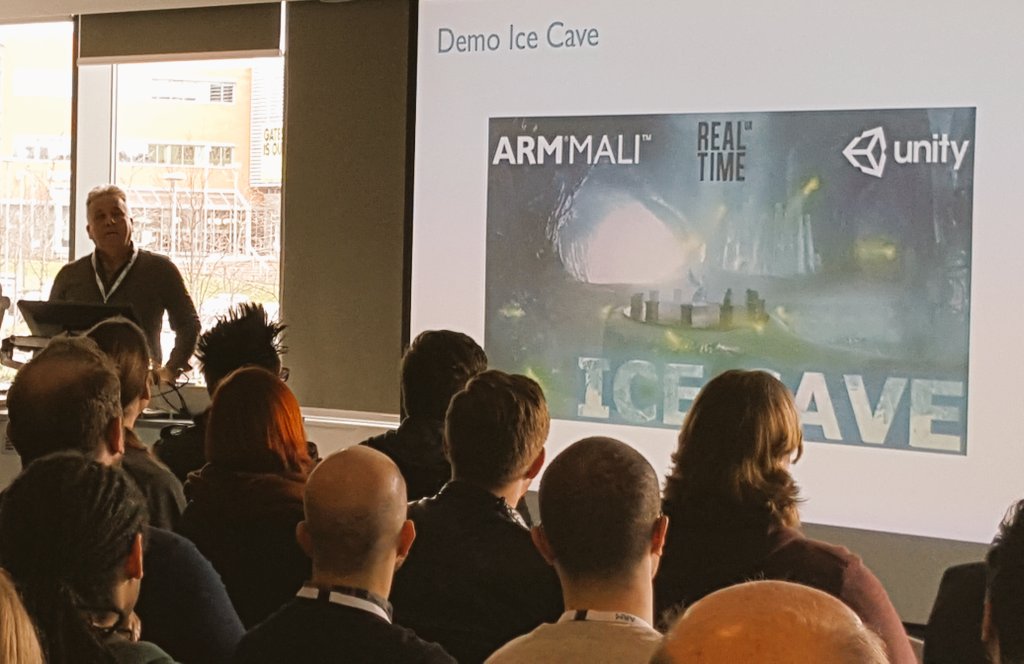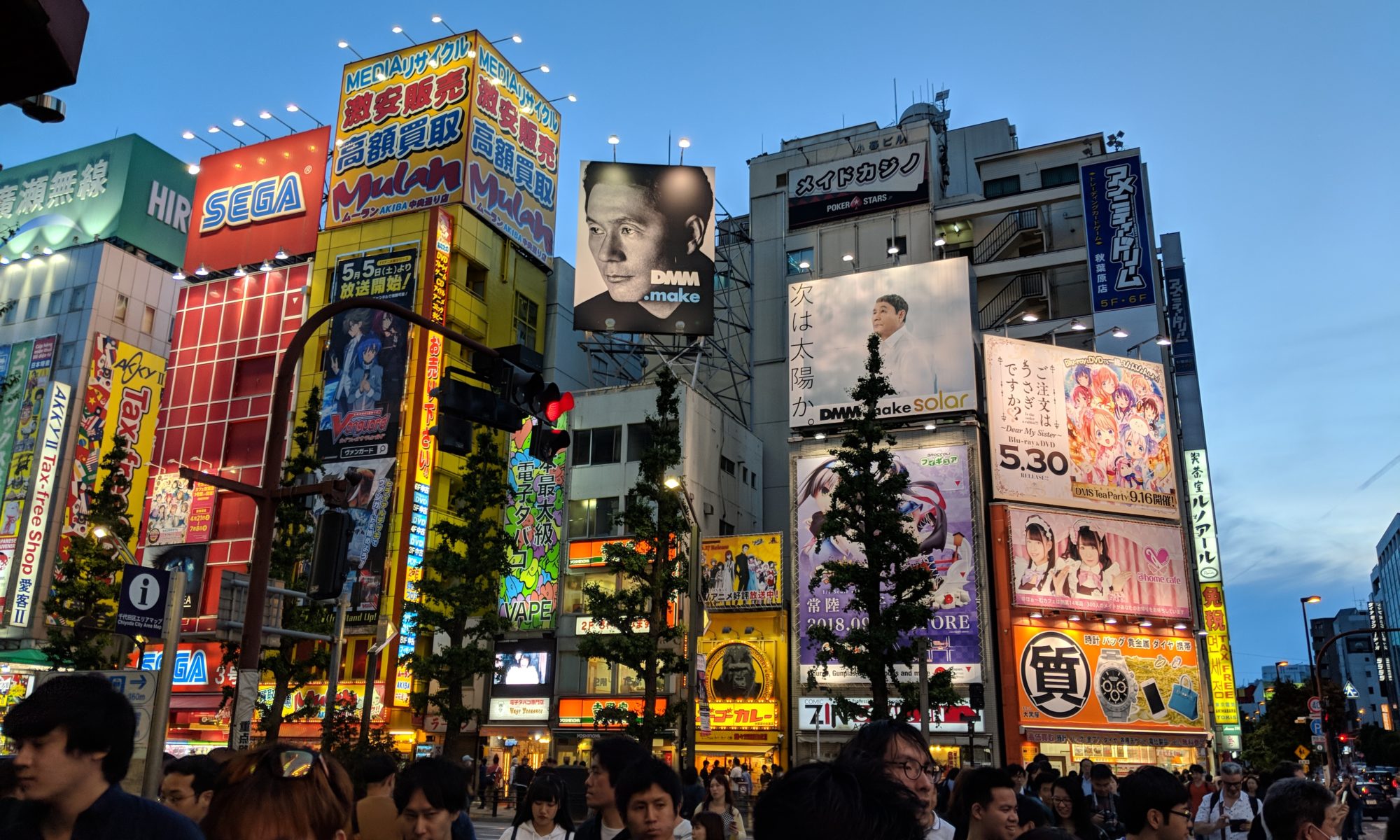Attending the VRTGO virtual reality (VR) developer day was a great experience, which helped me understand some of the issues and potential solutions that VR developers are working with today, and how that will have an impact my own designs. While some of the talks got very technical I felt I could keep up and took away some valuable insights which I can use in my future projects.
I felt the most technical talk was by Roberto Lopez Mendez, Senior Software Engineer at ARM. He took time to explain the challenges faced in porting an experience made in Unity – their Ice Cave demo – to the GearVR platform. Since GearVR makes use of relatively lower power mobile hardware, Mendez also detailed how they optimise different aspects of the experience, such as; lighting, reflections, refractions, etc. and how we can adapt what they learnt for use in our own projects.
The result of their work is a rather impressive demo, which I got to try for myself. By using the techniques they outlined in their presentation, they were able to create a vivid interior environment, which had beautifully rendered effects that really made the scene feel realistic and believable. All of this was running on a Samsung S6 smartphone, which uses the Mali-T760 graphics processor. This is very inspiring when I consider what this could mean for my personal projects. If you’re a VR or mobile developer I highly recommend their Mali Developer microsite, which contains lots of useful resources.
Gateshead College are here with a #VR demo. Be sure to stop by during the break! #VRTGO #VirtualReality pic.twitter.com/ufco9KFOOd
— XRTGO 2019: Thursday 4th April (@XRTGO) March 3, 2016
Attending the event were some of my previous tutors from Gateshead College, who were showcasing their Level 3 Games Design students’ work. A VR environment modelled off of places I frequented while studying there. It was interesting to find out that the students were able to reproduce the environments convincingly in only seven weeks! Hopefully, I’ll get another chance to see what the students and staff have been up to in the future!
Other talks on design and programming tips for VR included:
- Patrick Connor, Principle Engineer at PlayStation VR – discussed the importance of reprojection and how asynchronous reprojection is used in PlayStation VR
- Oliver Kibblewhite, Head of Special Projects at Rewind Studios – explained the spectrum of applications for VR, as well as tools and techniques to improve our workflows.
- Eddie Beardsmore, Project Manager at Coatsink – discussed the journey they took while working towards their latest title, Esper 2
- Paul Colls, Creative Director at Fierce Kaiju – similarly explained the lessons his team learnt when evaluating their game, Viral
- Rachel Derbyshire, Co-founder & Creative Director at Chronicles VR – did a more experience focussed talk focussing on considerations for the first time user and the importance of understanding your audience’s ability level
- Dan Gilmore, Head of UI & UX at Atomhawk – talked through designing user interfaces for VR and how their work affected the high profile VR title EVE Valkerie
Each developer talked a bit about their history and the unique challenges they faced in producing VR content for a range of different clients, as well as tips on how to avoid making the same design mistakes they had. I found all of the topics interesting and respect that the speakers and the event staff took the time to put this together for us, as the event was an invaluable source of inspiration and advice for me. Too much information, in fact, for me to write in detail about here. However, one thing I’d like to point out was the mention of VR Together, an organisation with a mission to encourage people to produce meaningful VR experiences that will improve human lives. This is something I gravitate towards because I feel that VR needs to be approached as a new medium in itself and that we should use this opportunity to create content that has a positive impact on us as the audience.
The day ended with a final round of questions for the attending speakers. Most interestingly, some good discussion took place around the subject of how we could rate and label virtual experiences, with some developers feeling that the current classification and rating systems (i.e. PEGI) may be insufficient in dealing with virtual experiences. Kibblewhite argued that due to their unique form of immersion and presence, virtual experiences, unlike other mediums, do not need creators to push visual and auditory elements to extremes in order to elicit a strong emotional response from a person: and I agree. Though you could argue that some of the most touching moments you’ve had with games, film or literature can be triggered by their nuances or subtle juxtapositions and I would also agree.
I think this is an interesting takeaway because if we really are going to view this as a new medium we should probably also build up a new lexicon with which to discuss and describe the experience from a consumer standpoint too. Without these considerations – and even with – I’m sure it’ll only be a matter of time before we see the headline ‘Child kills sibling playing VR murder simulator, Minecraft VR’.

While walking home this got me thinking about my HND dissertation, where I looked at how game design choices can have reaching consequences and the importance of those consequences to society. That’s when it hit me. I had learnt so much over the day that all of the things I had learnt since writing my dissertation were now fitting together. Older ideas I had were being discarded or overwritten and pieces of knowledge which were only loosely connected before felt reinforced and crystallised.



